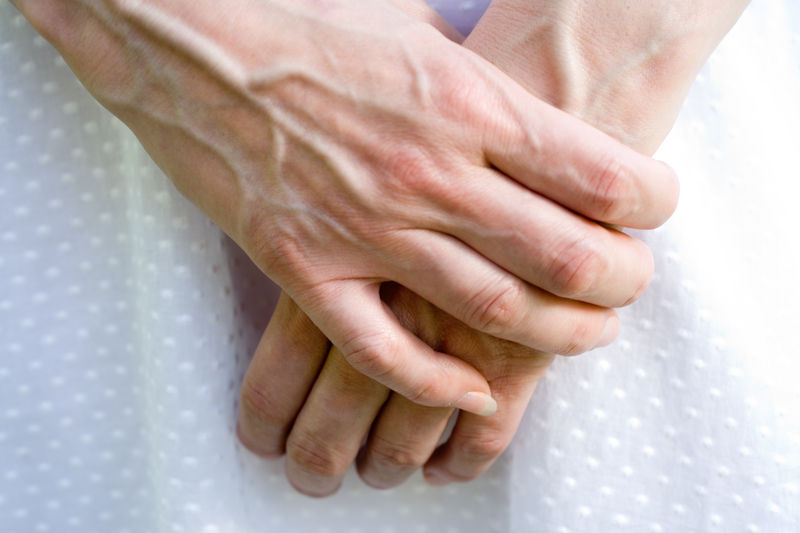
FRIDAY, Dec. 17 (HealthDay News) — Scott Galloway’s perspective as a high school athletic trainer changed the day a 14-year-old female basketball player at his school suffered sudden cardiac arrest and died on the court.
Her cause of death — exertional sickling, a condition that causes multiple blood clots — was something Galloway had only heard of as a student years before. But he quickly made it his mission to educate others about this complication of sickle cell trait (SCT).
In the past four decades, exertional sickling has killed at least 15 football players in the United States, and in the past seven years alone, it was responsible for the deaths of nine young athletes aged 12 to 19, according to the National Athletic Trainers’ Association (NATA). This year, two young football players have died from exertional sickling, said Galloway, a speaker at last week’s NATA’s Youth Sports Safety Crisis Summit in Washington, D.C.
“I’ve spoken to numerous groups in the last five years and I tend to be met with the same response — that they didn’t realize this was a big deal or that it had these types of ramifications,” said Galloway, head athletic trainer at DeSoto High School in DeSoto, Texas. “We’re still trying to get more focus on the condition.”
SCT is a cousin of the better-known sickle cell anemia, in which red blood cells shaped like sickles, or crescent moons, can get stuck in small blood vessels around the body, blocking the flow of blood and oxygen. Both conditions are inherited, but exertional sickling only occurs upon intense physical activities, such as sprinting or conditioning drills.
The first known sickling death in college football was in 1974, when a defensive back from Florida collapsed at the end of a 700-meter sprint on the first day of practice that season and died the next day.
Devard Darling, a wide receiver for the Omaha Nighthawks, lost his twin brother, Devaughn, from complications of SCT in 2001.
“We both learned we had sickle cell trait during our freshman year at Florida State,” Darling told NATA. “But even knowing the risks at the time, my brother died on the practice field before his 19th birthday.”
All 50 states now require SCT screening for newborns, which is done with simple blood tests, but not all high school athletes know their SCT status. Galloway said he would like to make testing mandatory for high school athletes, adding that the National Collegiate Athletic Association requires testing for the trait at the college level.
“Our stance is we want to know so we can treat them in the best way possible,” Galloway said. “We have never seen someone disallowed from sports because of SCT. If anything, we have seen kids thrive in their sports more because we have (interventional strategies).”
Often mistaken for cardiac or heat collapse, sickling is marked by subtle differences in athletes’ muscle tone and response, and collapse is usually not instantaneous. Simple precautions include progressing slowly in pace during training and stopping immediately if symptoms such as muscle cramping, pain or swelling occur along with weakness or fatigue.
“It’s an intensity syndrome … they don’t have symptoms unless they do something too intense or physically active,” said Dr. Brock Schnebel, head physician for University of Oklahoma athletics. “At high levels of athleticism, those kids experience symptoms because they have pushed themselves hard. The idea is to improve the margin of safety for the athlete any way you can. Identify it and be cautious with it.”
What’s needed, Galloway said, is a climate “that encourages coaches to set the right tone with these student-athletes. I have several kids here who condition and practice with their peers and they don’t have a problem. They learn to respond to their body.”
As with sickle cell anemia, SCT afflicts mostly African-Americans and other minorities, but whites can have it too. The gene is common among those whose origin is where malaria is widespread (since the gene fended off malaria), leaving about 1 in 12 African-Americans as carriers, according to U.S. health officials. Those of Mediterranean, Middle Eastern, Indian, Caribbean and South and Central American ancestry may also carry the sickle gene.
In comparison, SCT is present in between 1 in 2,000 and 1 in 10,000 white Americans.
“It’s wrongly thought to be a minority-only disease … so it doesn’t get the attention some other diseases get,” Galloway said.
More information
To learn more about sickle cell trait, visit the Nemours Foundation.

